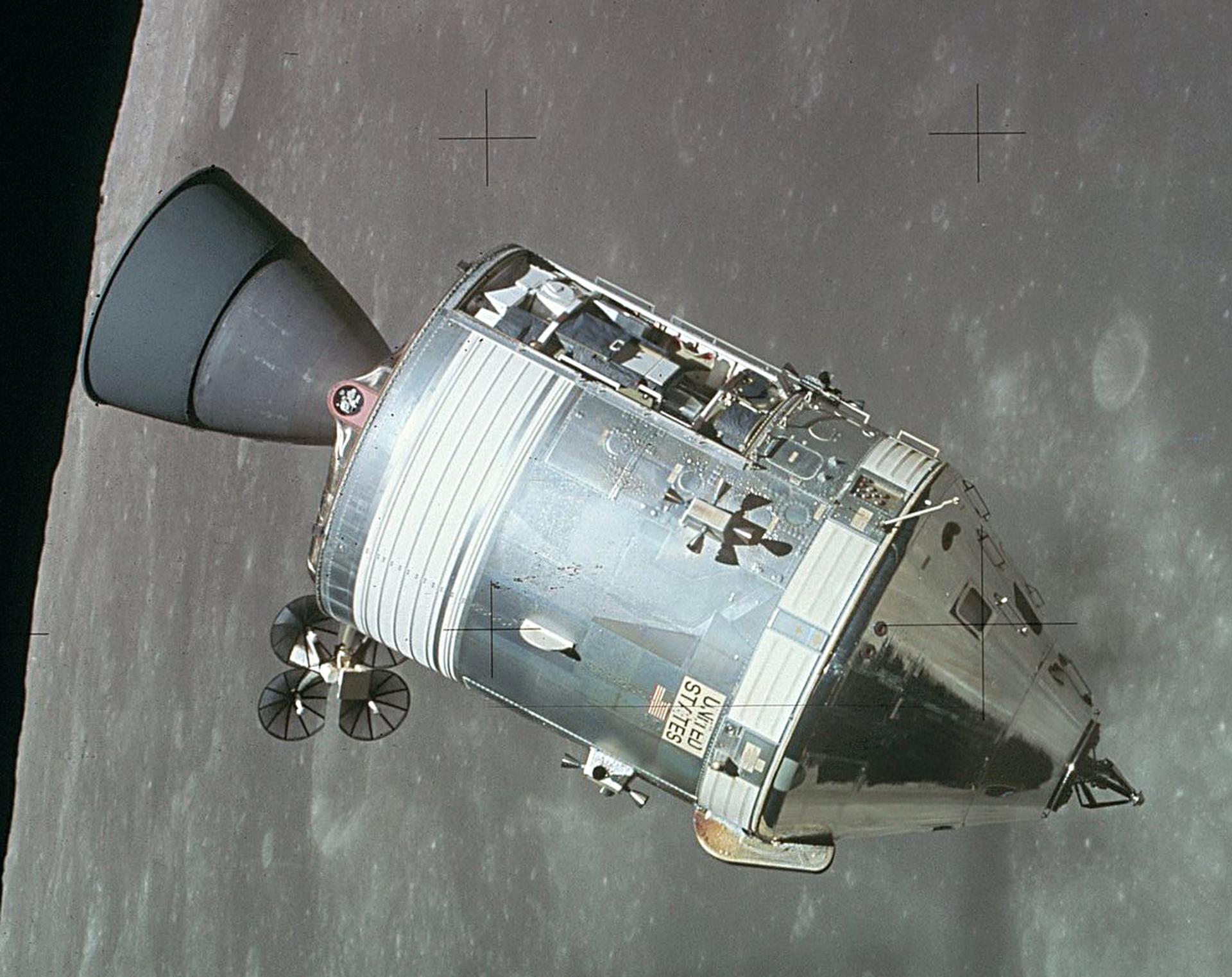
Apollo Command/Service Module
In-active Human Rated Capsule Crew Capacity: 3 Payload Capacity: 1050 kg Diameter: 3.9 m Height: 11.0 m()
Feb. 26, 1966
Cargo and Human Transportation to Lunar Orbit
Flight Life
14 days
Description
The Apollo Command/Service Module (CSM) was one of two principal components of the United States Apollo spacecraft, used for the Apollo program which landed astronauts on the Moon between 1969 and 1972. The CSM functioned as a mother ship which carried a crew of three astronauts and the second Apollo spacecraft, the Lunar Module, to lunar orbit, and brought the astronauts back to Earth. It consisted of two parts: the conical Command Module, a cabin that housed the crew and carried equipment needed for atmospheric reentry and splashdown; and the cylindrical Service Module which provided propulsion, electrical power and storage for various consumables required during a mission. An umbilical connection transferred power and consumables between the two modules. Just before reentry of the Command Module on the return home, the umbilical connection was severed and the Service Module was cast off and allowed to burn up in the atmosphere.
History
The Apollo Command/Service Module (CSM) was one of two principal components of the United States Apollo spacecraft, used for the Apollo program which landed astronauts on the Moon between 1969 and 1972.
Electron
Raise and Shine (RAISE-4)
Rocket Lab Launch Complex 1B - Rocket Lab Launch Complex 1, Mahia Peninsula, New ZealandRAISE-4 (RApid Innovative payload demonstration Satellite-4) is a Japan Aerospace Exploration Agency (JAXA) satellite for on-orbit demonstrations of …
Kuaizhou 11
DEAR-5
Launch Area 95A - Jiuquan Satellite Launch Center, People's Republic of ChinaDEAR-5 is a commercial in-orbit payload and micro-gravity experiments hosting spacecraft developed by Chinese commercial company AZSPACE for various …
Long March 12
SatNet LEO Group 16
Commercial LC-2 - Wenchang Space Launch Site, People's Republic of ChinaA batch of Low Earth Orbit communication satellites for the Chinese state owned SatNet constellation operated by the China Satellite Network Group. …
Falcon 9
Starlink Group 6-90
Space Launch Complex 40 - Cape Canaveral SFS, FL, USAA batch of 29 satellites for the Starlink mega-constellation - SpaceX's project for space-based Internet communication system.
Falcon 9
Starlink Group 15-11
Space Launch Complex 4E - Vandenberg SFB, CA, USAA batch of 27 satellites for the Starlink mega-constellation - SpaceX's project for space-based Internet communication system.
Kinetica 1
9 satellites
Launch Area 130 - Jiuquan Satellite Launch Center, People's Republic of ChinaShare ride of 9 satellites to sun-synchronous orbit: * Satellite 813 (United Arab Emirates) * Jilin-1 Gaofen 07B-01/07C-01/07D-01 * Dongpo-15 …
Falcon 9
NROL-77
Space Launch Complex 40 - Cape Canaveral SFS, FL, USAClassified payload for the US National Reconnaissance Office.
Long March 3B/E
TJSW-22
Launch Complex 3 (LC-3/LA-1) - Xichang Satellite Launch Center, People's Republic of ChinaChinese classified satellite claimed to be for communication technology test purposes. Actual mission not known.
Long March 4B
Yaogan 47
Launch Area 94 (SLS-2 / 603) - Jiuquan Satellite Launch Center, People's Republic of ChinaThe Yaogan 47 is a Chinese military “remote sensing” satellite of unknown purposes.
Falcon 9
Starlink Group 6-92
Launch Complex 39A - Kennedy Space Center, FL, USAA batch of 29 satellites for the Starlink mega-constellation - SpaceX's project for space-based Internet communication system.

